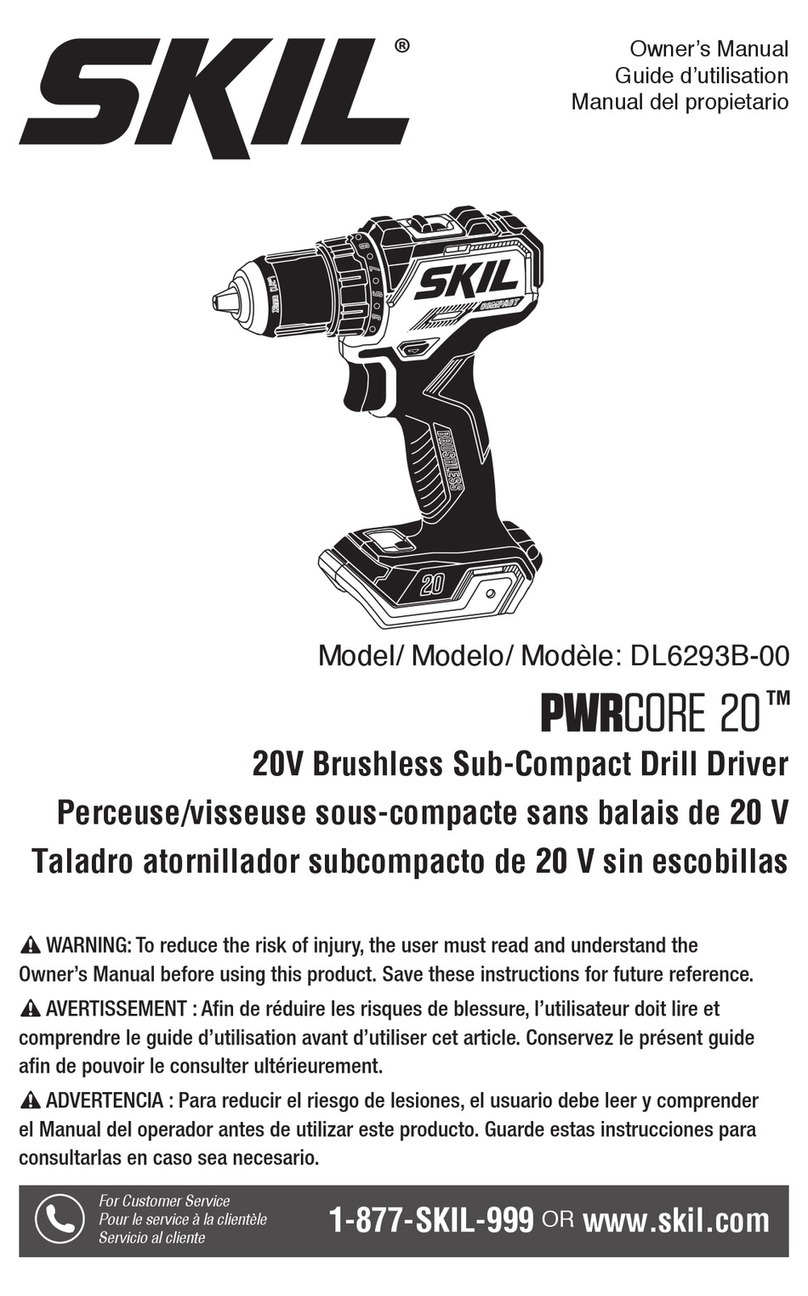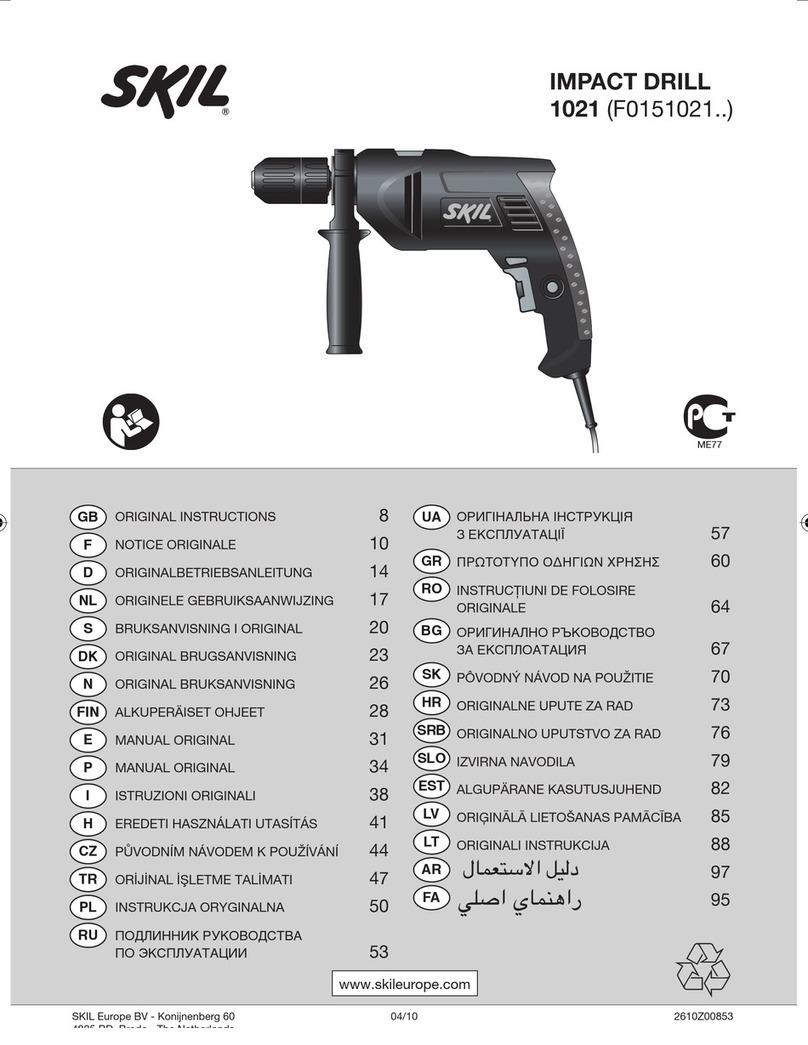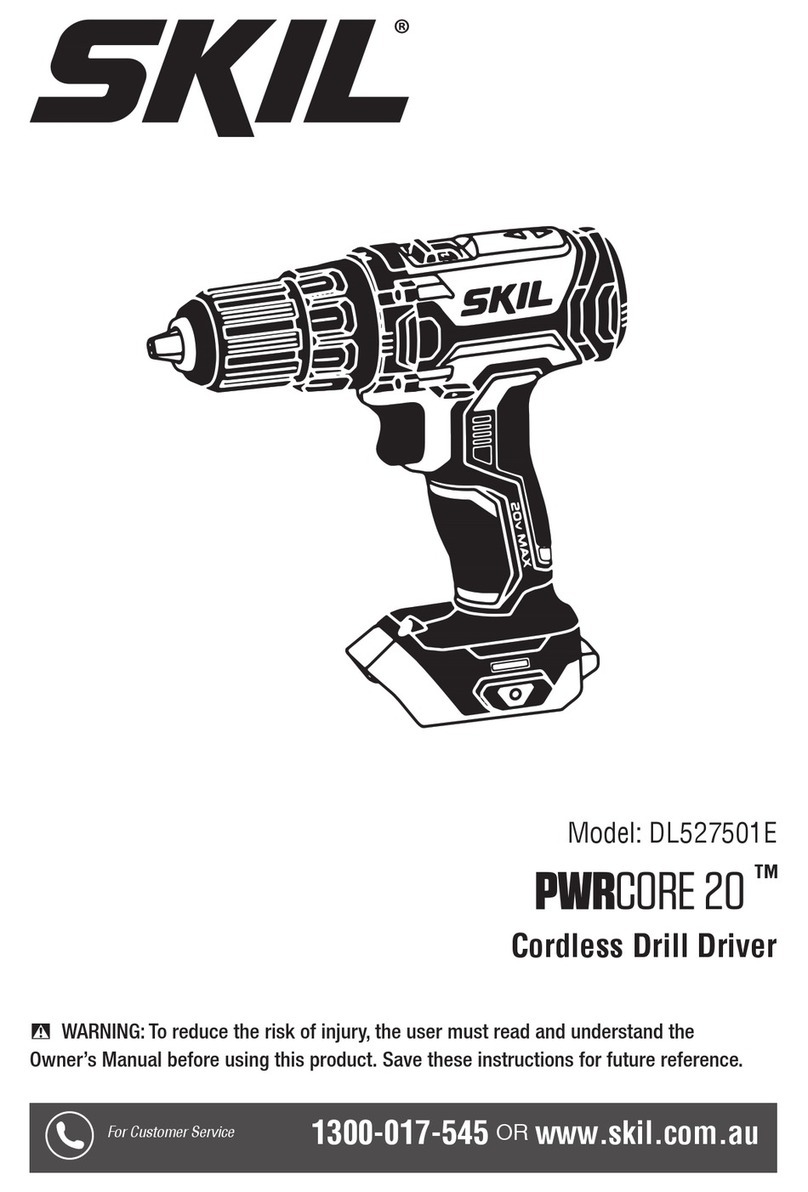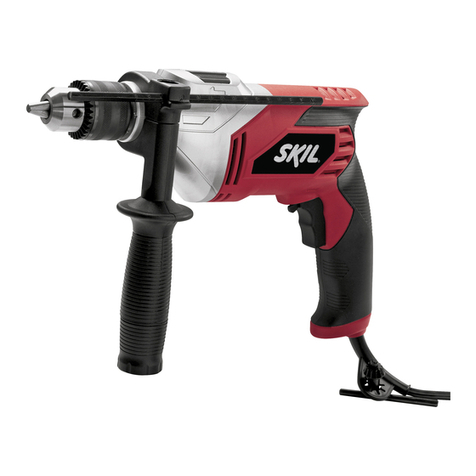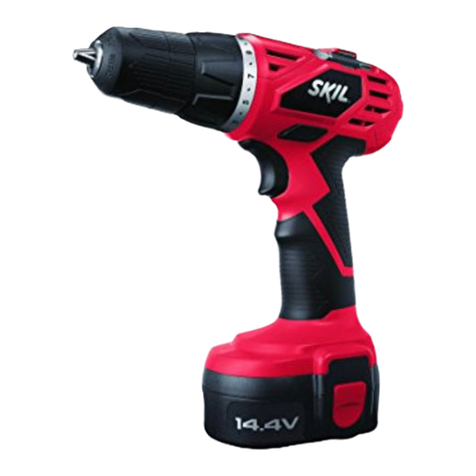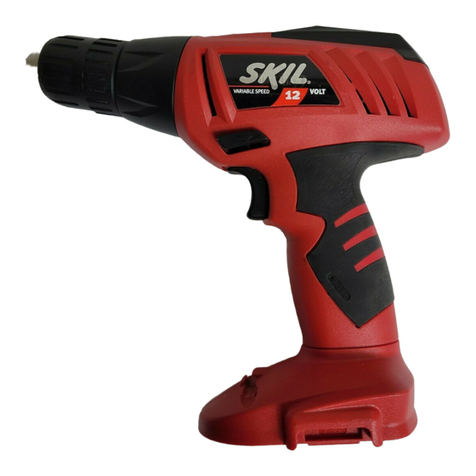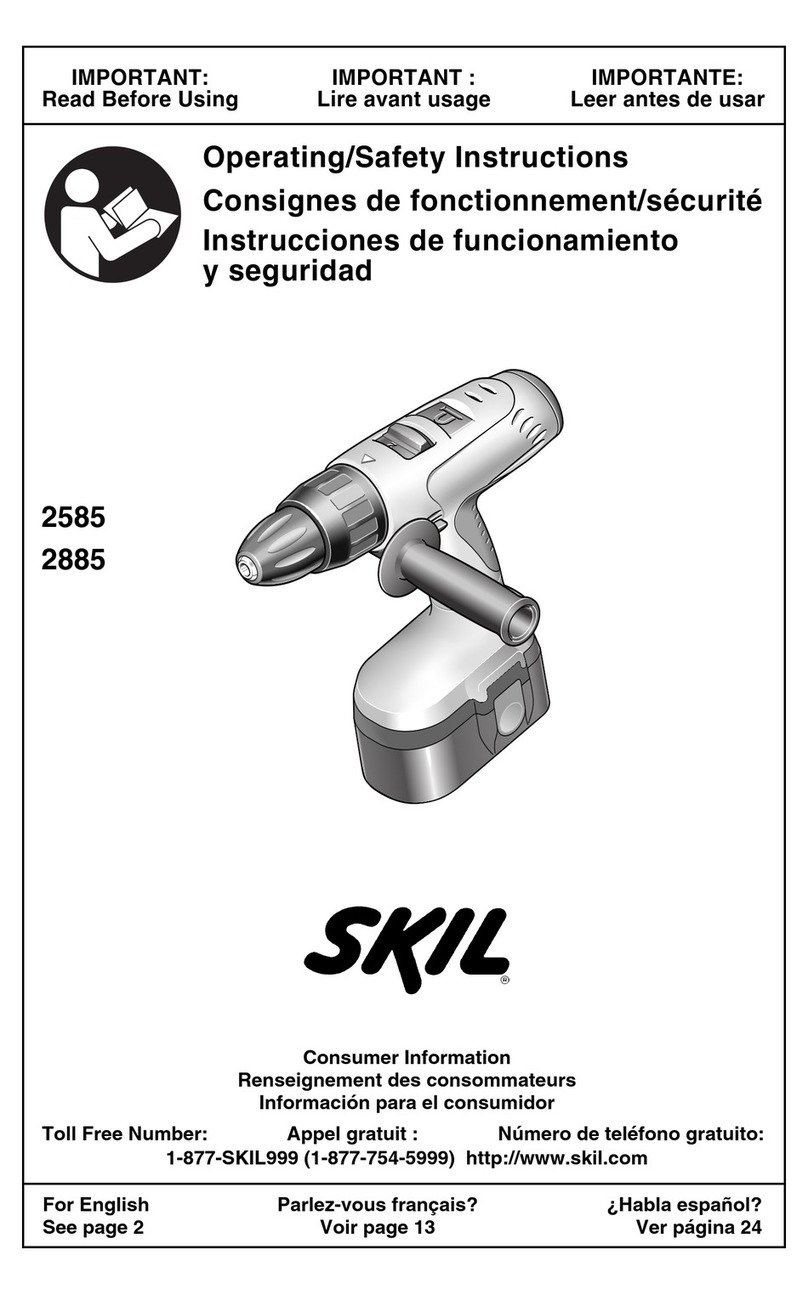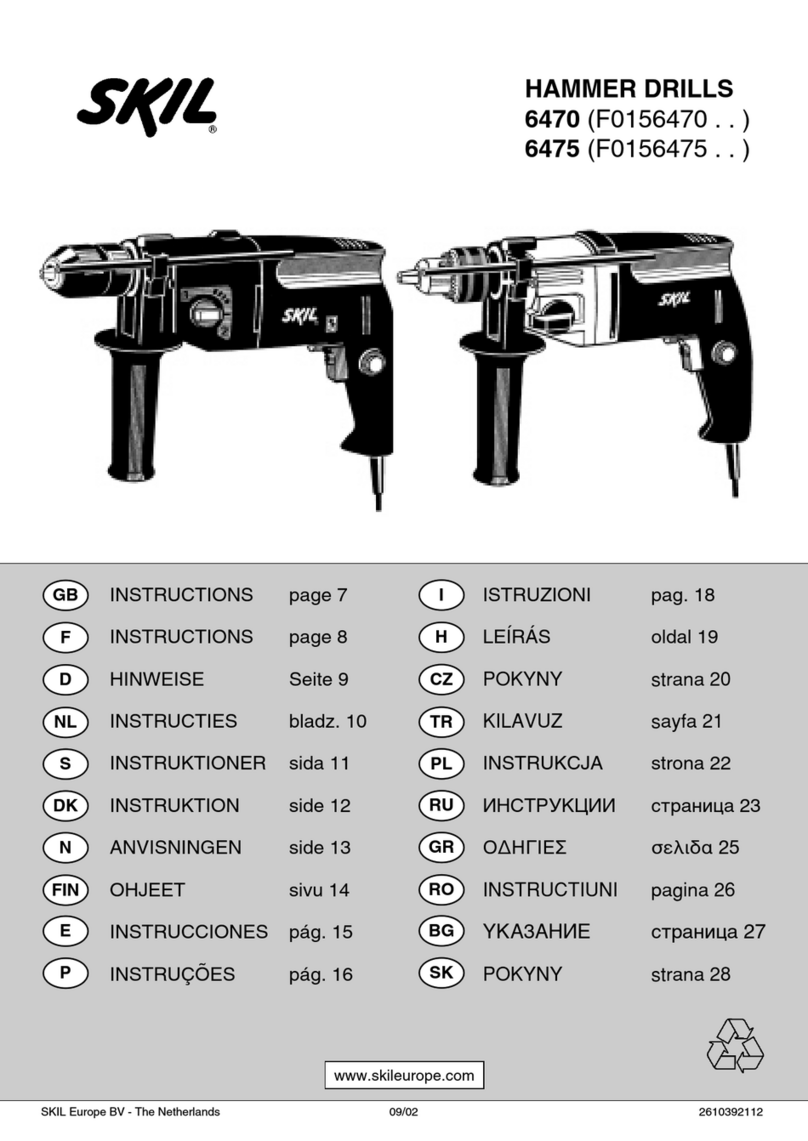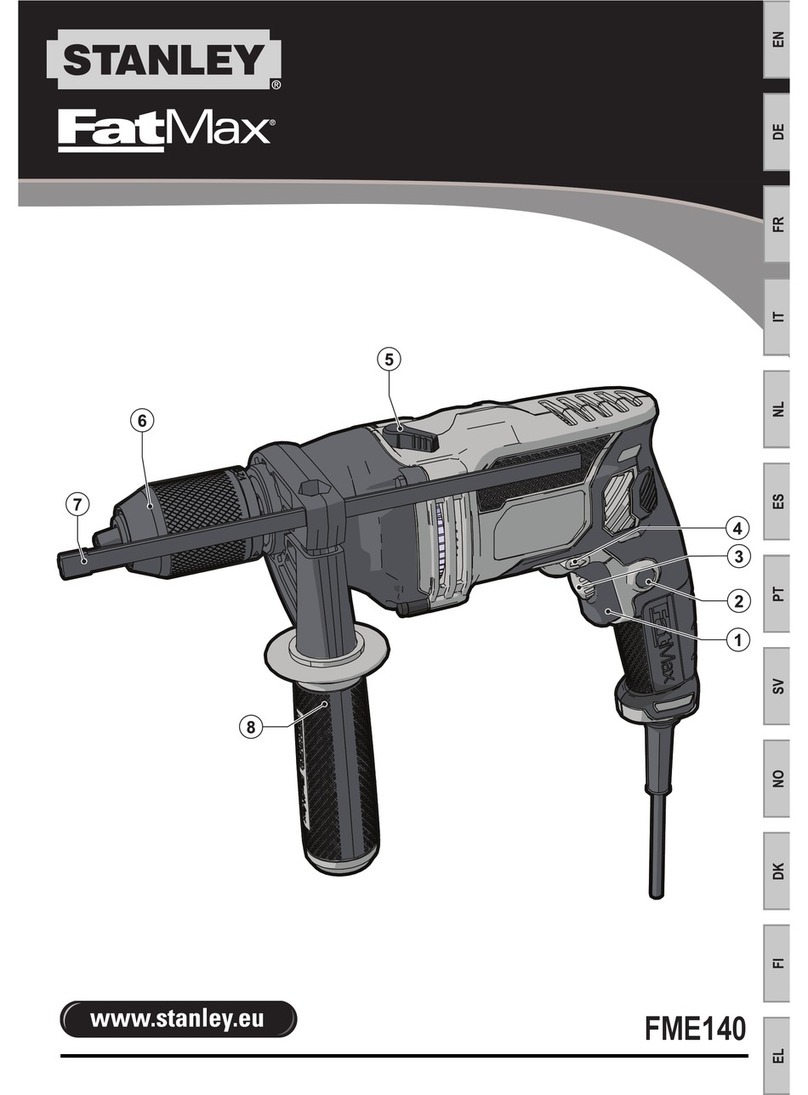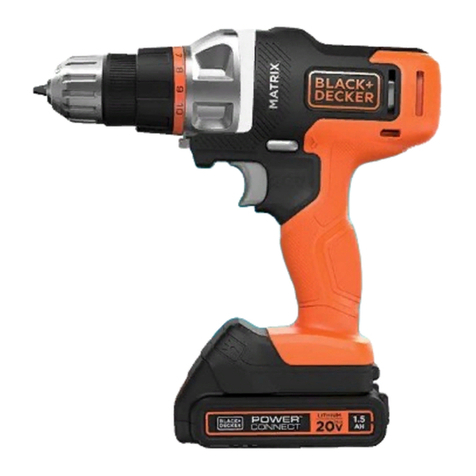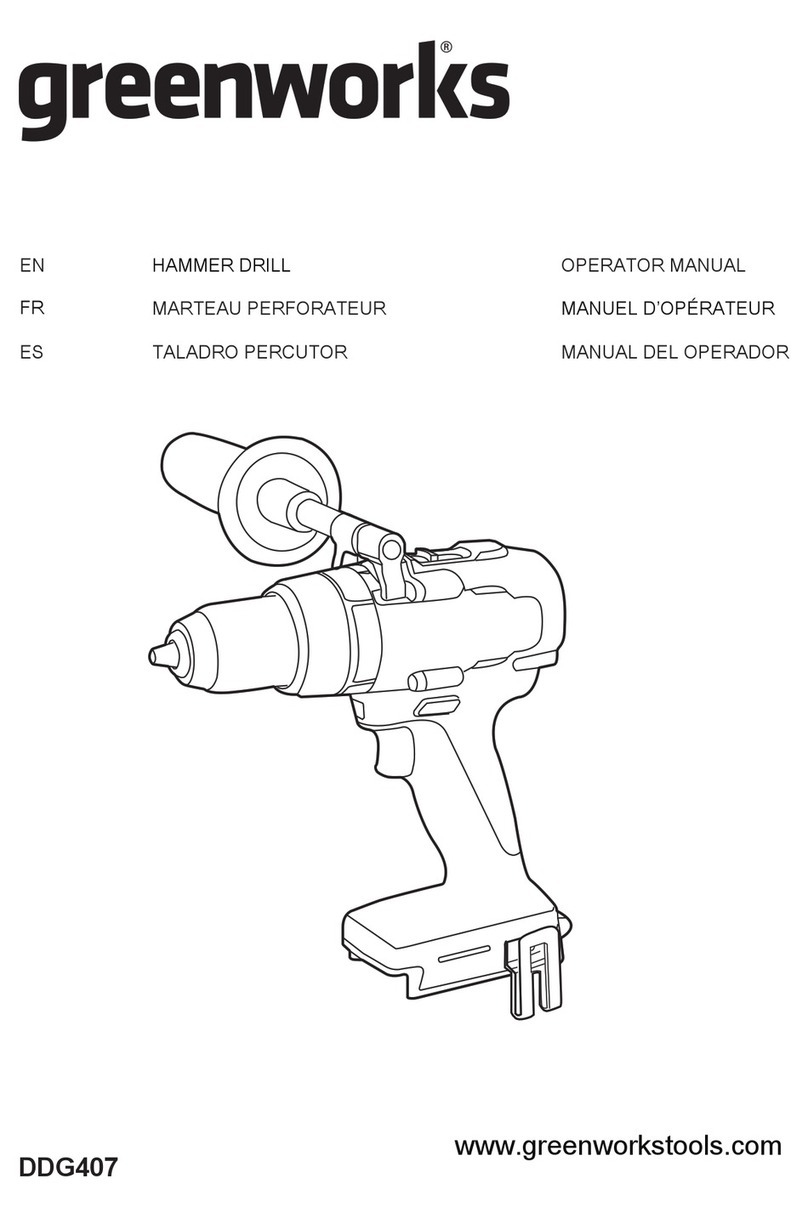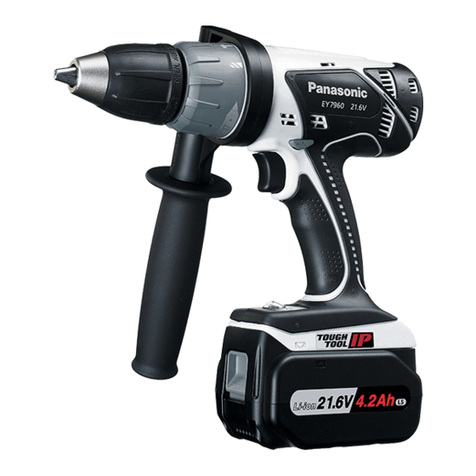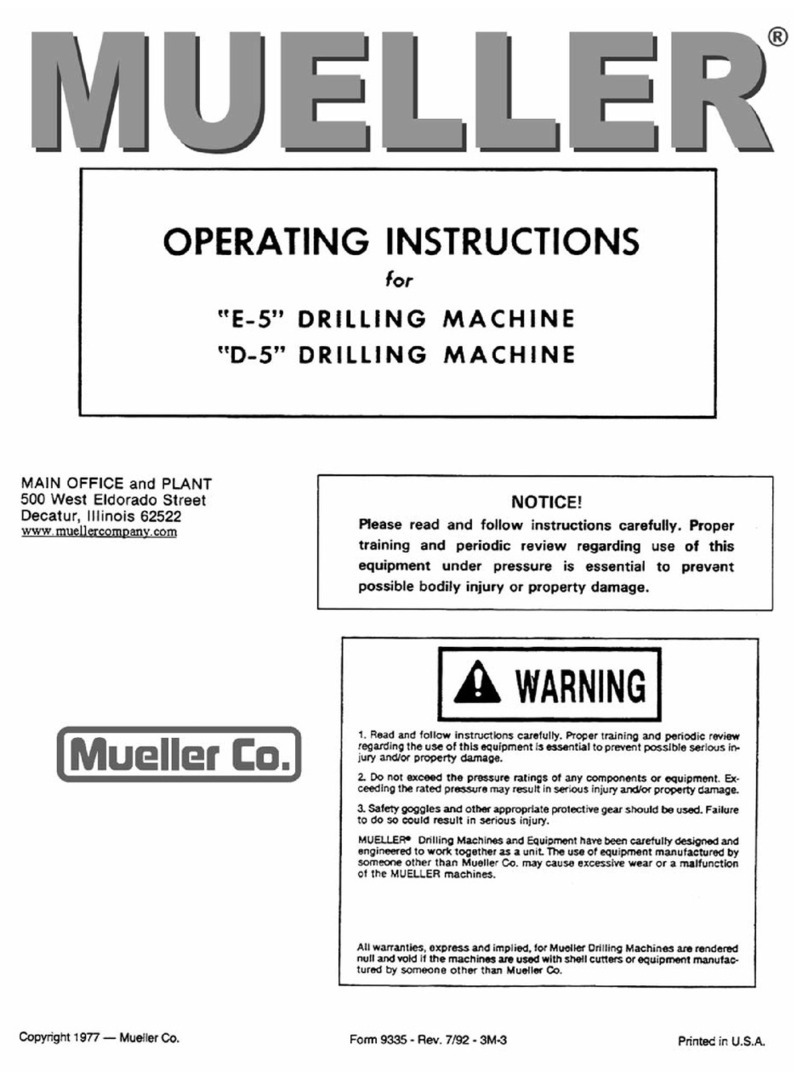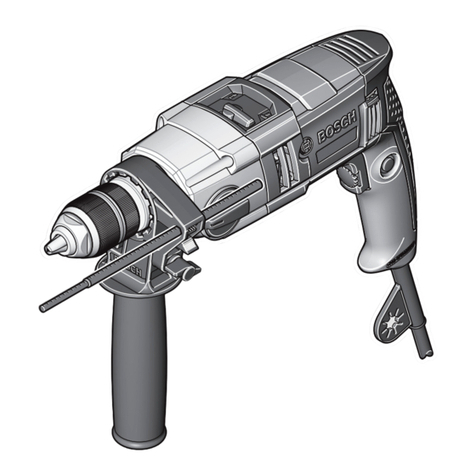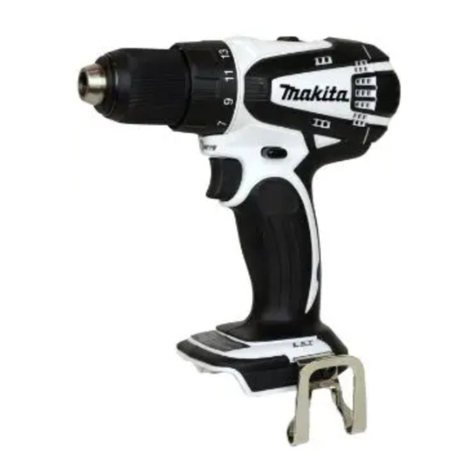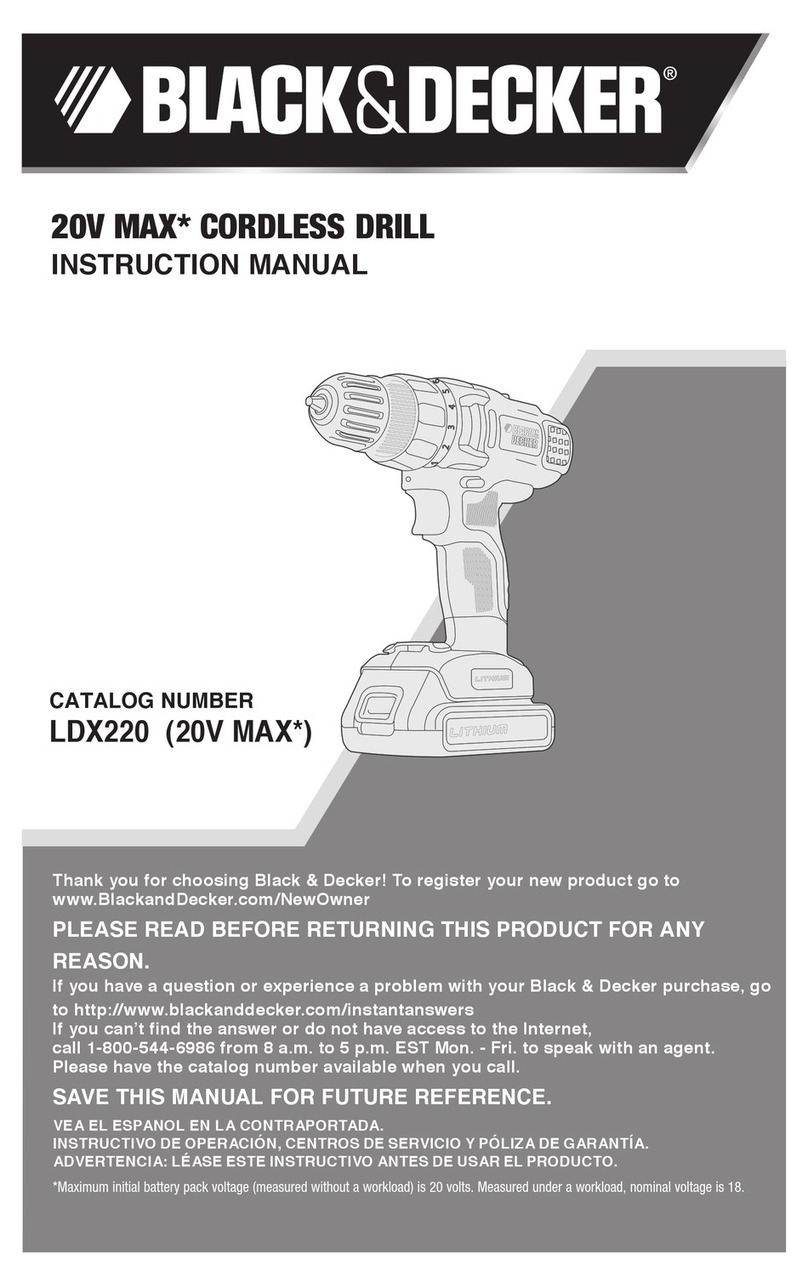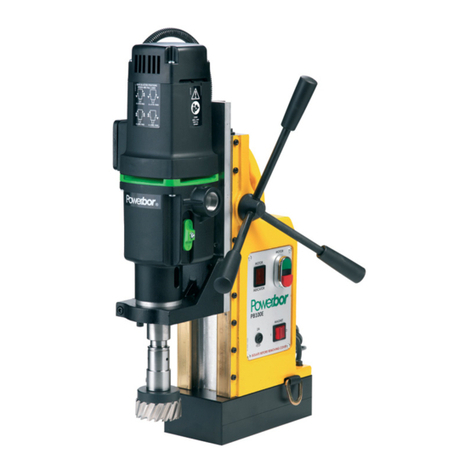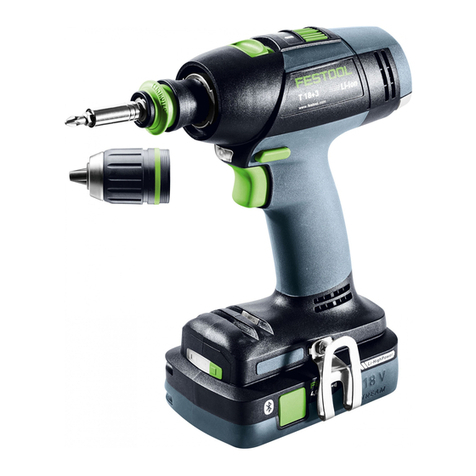7
e) Maintain power tools. Check for misalignment or
binding of moving parts, breakage of parts and any
other condition that may affect the power tool’s
operation. If damaged, have the power tool repaired
before use. Many accidents are caused by poorly
maintained power tools.
f) Keep cutting tools sharp and clean.
Properly maintained cutting tools with sharp cutting
edges are less likely to bind and are easier to control.
g) Use the power tool, accessories and tool bits etc.,
in accordance with these instructions, taking into
account the working conditions and the work to be
performed. Use of the power tool for operations
different from those intended could result in a
hazardous situation.
5) SERVICE
a) Have your power tool serviced by a qualified repair
person using only identical replacement parts.
This will ensure that the safety of the power tool is
maintained.
SAFETY INSTRUCTIONS FOR DRILL/DRIVERS
• Avoid damage that can be caused by screws, nails and
other elements in your workpiece; remove them before
you start working
• Always check that the supply voltage is the same as the
voltage indicated on the nameplate of the tool
(tools with a rating of 230V or 240V can also be
connected to a 220V supply)
• SKIL can assure flawless functioning of the tool only
when original accessories are used
• Use only accessories with an allowable speed matching
at least the highest no-load speed of the tool
• This tool should not be used by people under the age of
16 years
• Use completely unrolled and safe extension cords with
a capacity of 16 Amps (U.K. 13 Amps)
• Always keep the cord away from moving parts of the
tool
• If the cord is damaged or cut through while working, do
not touch the cord, but immediately disconnect the plug
• Never use the tool when cord is damaged; have it
replaced by a qualified person
• If the drill bit becomes unexpectedly jammed (causing a
sudden, dangerous reaction), immediately switch off the
tool
• In case of electrical or mechanical malfunction,
immediately switch off the tool and disconnect the plug
• Secure the workpiece (a workpiece clamped with
clamping devices or in a vice is held more securely than
by hand)
• Hold the power tool only by the insulated gripping
surfaces when performing an operation where the
accessory may contact hidden wiring or its own
power cord (contact with a “live” wire will also make
exposed metal parts of the power tool “live” and shock
the operator)
• Use suitable detectors to find hidden utility lines or
call the local utility company for assistance
(contact with electric lines can lead to fire or electrical
shock; damaging a gas line can result in an explosion;
penetrating a water pipe will cause property damage or
an electrical shock)
• Do not work materials containing asbestos
(asbestos is considered carcinogenic)
• Dust from material such as paint containing lead, some
wood species, minerals and metal may be harmful
(contact with or inhalation of the dust may cause
allergic reactions and/or respiratory diseases to the
operator or bystanders); wear a dust mask and work
with a dust extraction device when connectable
• Certain kinds of dust are classified as carcinogenic
(such as oak and beech dust) especially in conjunction
with additives for wood conditioning; wear a dust
mask and work with a dust extraction device when
connectable
• Follow the dust-related national requirements for the
materials you want to work with
• When you put away the tool, switch off the motor and
ensure that all moving parts have come to a complete
standstill
• Always disconnect plug from power source before
making any adjustment or changing any accessory
WHEN CONNECTING NEW 3-PIN PLUG (U.K. ONLY):
• Do not connect the blue (= neutral) or brown (= live) wire
in the cord of this tool to the earth terminal of the plug
• If for any reason the old plug is cut off the cord of this
tool, it must be disposed of safely and not left
unattended
USE
• On/off 4
• Speed control for smooth starting 5
• Changing direction of rotation 6
- when not properly set in left/right position,
switch A 2cannot be activated
! change direction of rotation only when tool is at a
complete standstill
• Changing bits 7
- insert the bit as deep as possible in the chuck
! do not use bits with a damaged shank
• Torque control (VariTorque) 8
- output torque will increase as clutch ring D is rotated
from 1 to 20; position E will lock up the clutch to
permit drilling or driving heavy duty work
- when turning in a screw, first try VariTorque position 1
and increase until the desired depth has been
reached
• Mechanical gear selection 9
- set selector F to desired speed
! actuate the gear selector while tool is running
slowly
LOW
- low speed
- high torque
- for screwdriving and drilling large diameters
- for tapping thread
